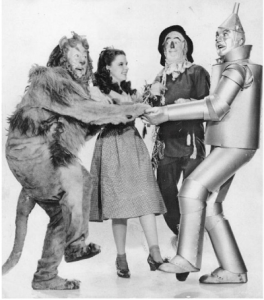Virtual Events: Content is King
Virtual Events: Content is King
Out with the old…
I admit it—I am a big fan of live events. I love meeting customers and colleagues face-to-face. I enjoy connecting with an audience on whose faces I can read interest, confusion, perhaps even light bulbs going off over their heads. I enjoy casual conversations, perhaps over cold bagels or a glass of wine (I prefer the wine). However, in recent years I have seen event attendance drop off, and that was before COVID-19 made its debut.
…in with the new!
People smarter than I have predicted that virtual events are becoming the new normal—and I think both attendees and those hosting the events can benefit. Not only do virtual events eliminate many of the barriers to attendance (costly conference passes and travel, large time commitments, inconvenient scheduling), they are more readily available to wider audiences geographically. And, let’s face it, virtual events that use technology well are likely to have greater appeal to younger audiences.
Of course, benefits to the hosting companies are many as well—shorter lead times (no competition for conference venues), less costly to staff, great data analytics, content reusability, and much more. I could go on, but I recommend the recorded #AventiLive Chat session “Making the Move to Virtual Events: Why and How” presented by Jeff Thompson, Michaela Gubbels Botha and Avery Horzewski.
In that session, they emphasize the similarities (and differences) between live events and virtual events. Yes, you still need to plan, develop a theme, harmonize messaging, and partner appropriately. You still need to recruit the best speakers, ensure quality content in line with messaging, and promote the heck out of the event. And you certainly still must focus on the attendee experience.
Content is near and dear to my heart, having played a major part in content development and review for SAPinsider for SAP Governance, Risk and Compliance solutions. So, let’s explore content changes needed for a virtual event world.
We’re not in Kansas (or Las Vegas) anymore

Content is king, now more than ever. In fact, content IS your event. That bears repeating: content IS your event. If you have ever attended a simple virtual event—a webinar, for example—how long did you stay engaged past the seemingly endless speaker introductions and “Let me tell you about our company” messages? At that point, I’m heading for a Diet Coke and some email review. If the agenda wasn’t compelling, I’m gone. I MAY look at slides or a video later when I can fast-forward to my heart’s content, but that’s 50-50 at best.
Make an immediate impact with your content
With virtual events—before, during, and after the event—you need to put your content into the deep fryer and don’t take it out until it’s crisp, yet juicy. To mix my metaphors, think like a journalist and get the important stuff up front. Punch up the headlines. Conventional wisdom says you have between 7 and 15 seconds to capture an audience’s attention. That’s less than the 20 seconds you should spend washing your hands according to COVID-19 experts. So, how do you create or adjust your content to appeal to digital event participants?
- Align with participants’ needs. In too many meetings, I have heard marketers discuss at length “what we want to tell attendees” rather than “what attendees want and need to hear.” Clearly both are important, but how do you know what potential attendees want? Ask them! Surveys and discussions using social media can help gather this feedback before you plan content, as well as during and after the event to help plan for future events.
- Revisit your messaging. I think it likely that whatever your messaging is today, it could be shorter and even more to the point. Try it out on those who don’t use your products (yet) to make sure it’s clear, engaging and memorable. Because your messaging and theme will influence the content, it’s important to get this right.
- Shorten content. It’s often wise to reuse some existing content, but you will need to shorten the presentation timeslots and make sure all content meets the “so what?” test. Here are a few rules of thumb:
- A keynote speech, which might have been an hour or more at a live event, should be cut to 15-30 minutes for a virtual event. Better yet, use the TED Talk guideline of 18 minutes or less. This imposes a need for clarity and focus, yet allows enough time to convey key ideas.
- Individual sessions, often more detailed than a keynote, should be cut as well. About 30 minutes might be a reasonable target, less if the topic warrants. Remove the fluff and cut to the chase. Focus on information will create an “aha!” moment for participants, leaving them ideas to “take home”—virtually, that is.
- Panel discussions are inherently more interactive and, as such, are a good choice for virtual events. As a result, they can be a bit longer—perhaps 45-60 minutes. But it’s even more important to have a good emcee (and good software) to funnel questions to the right speaker at the right time, keep things on track, and watch the time. Don’t forget to write some questions and answers in advance just in case.
Remember as you shorten content that it’s easy to provide downloadable assets to supplement your delivered content. Participants appreciate it, and it can keep your presentations interesting.
- Make it interactive. Plan sessions with participant interaction in mind by planning a variety of presentation methods and leveraging technology for live streaming, video, chats, polling, quizzes, whiteboards, and even gamification. Since it is often EASIER to relate to a speaker in a virtual presentation (everyone can see better than they could in the front row at a physical event), keep the speaker on the screen as much as practical. You’ll notice that I didn’t mention PowerPoint. I do love PowerPoint, and it can be used in moderation, but it should not be the default method of presentation.
- Make it entertaining. This doesn’t mean speakers should tell jokes—they often fall flat anyway—but they should supplement delivered content with anecdotes or personal experiences that illustrate key points. Audiences that relate to the speaker are more likely to enjoy the presentation and find value.
- Review early and often. The best content, whether for a live or virtual event, is reviewed for coherence, consistency in theme and message, quality, and adherence to company guidelines. This is especially important for virtual events, with their variety of presentation formats, time limitations, and the need for extreme focus. Because virtual events live on past the original event date, these are “golden assets” that will likely be shared far beyond initial audiences. So consider convening a small committee for review.
Virtual events are becoming the new normal, and great content is an important cornerstone. Aventi has a variety of services that can help you build a virtual event capability or expand your existing skills. We can also help you create more engaging and dynamic content. Take a closer look at our offerings in the Aventi Group Events Marketing Practice Brief. And, if you have any questions, or would like assistance with your own virtual event, please contact us here.




